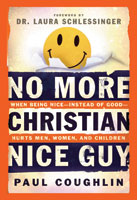Blogger: Janet Kobobel Grant
Location: Books & Such Main Office, Santa Rosa, Calif.
Having worked on magazines, helped to establish publishing ventures, and managed publications departments for large, nonprofit organizations, I learned that when a logo is developed, it pays to take a look at it in sizes that range from a postage stamp to a huge banner. That way you know it works regardless how you might use it in the future.
In the past, when I took my first look at a client’s book cover during the design phase, I’ve asked myself if it’s going to pop on a bookstore shelf. After all, you don’t want a shrinking violet of a cover that doesn’t insist the passerby pick it up. But nowadays, as with logos, it pays to look at the cover not only in terms of its bookstore “pop” factor but also in terms of its Amazon pop factor. What does your cover look like when it’s reduced to a tiny version of its original self?
The other day one of our client’s cover was pictured in a trade publication along with five other releases being highlighted in the article. Our client’s cover, which is so intriguing as a trade paper image, died when reduced to a smaller size. The title, the author’s name, and even the illustration were indiscernable. Lesson learned!
Here’s a cover that looks good large but not so much small. Actually, in its small version, the image could be a polar bear about to lunch on a seal. In actuality, its a woman slipping through the watery passage from life to death. On the cover itself the design is evocative, but shrunk to a smaller size, its more mystifying than intriguing.

And here’s one that pops when it’s gi-normous or dinky.


That is one thing I’ve been noticing lately. I’ve been attempting to purchase more things over the internet. I’m an old fashioned buyer. I like holding it in my hands, weighing it and then deciding. It’s easier to put it back on the shelf if you decide you don’t like it than to repackage it, go back to the post office and mail it back. And then there are the return policies…which I will leave behind as that has absolutely NOTHING to do with your post. Sorry.
However! I was wondering if perhaps there might be a trend where either the covers become simplified or there are two–the full-sized version and the Internet version. I definately like the happy face cover. Absolutely love it. The water one? *shrug* Not so much.
Wow, the contrast was amazing, Janet. I’d never thought of the reduced-size factor.
My daughter recently commented that she likes covers that don’t show the entire face of the character because she likes to imagine it from reading the book. I thought her perspective as a reader was interesting.
That is interesting about the reduced size image. Might that be one of the reasons for the trend to depict supersize images of people on them such as Nancy Moser’s historicals and the bold colors of Robin Jones Gunn’s novels?
I always wondered if the authors get to have a voice in the book cover design.
To be honest, I haven’t thought much about book covers in the past. This has really opened my eys. Thank you!
Great post. Never thought of the smaller version and how that would look.
Thanks.
You’ve made a great point.
My daughter and I picked up a DVD from RedBox last night. Maybe it’s a case of 50-year-old eyes, but I noticed that the thumbnails of some videos were much more recognizeable and enticing than others–especially when viewed from a distance as we waited in line.
It’s interesting to think about how a book’s cover design might capture interest in an online thumbnail or from a distance on a store shelf. First impressions are important.
I learned this with CD covers. A favorite singer/songwriter of mine released a new praise CD and on the cover she’s leaning forward in a chair and the center of the image is a lovely necklace with a cross. In the online size, that necklace suddenly looks like WAY too much cleavage.
Do authors get much input on covers? As both a writer and an artist, presentation concerns me just as much as the writing skills. But I’m not always given a chance to “chime in” on the visual aspects. What would be reasonable to request?
How much say does an author have on his/her cover? One vote. Who else is voting? The editorial team, the marketing team and the sales team at the publishing house. Get the picture? :-
Do I think publishers will create two covers: one that works well large; another that works well small. I doubt that will happen because publishers want potential book buyers to recognize a book by its cover, and that goal becomes diluted if you change the cover each time you want it to serve a particular purpose. The same goes for logo designs. You want to think about large, medium, small iterations of a logo/cover when you make your selection. But we seldom look at the cover in its tiny form when we make decisions.
The large images on Nancy Moser’s covers work well when the cover is reduced but also work well when the cover is enlarged. It’s a good choice. And Robin Jones Gunn’s bold covers serve the same purpose as well as shouting out that the character lives life large and in vivid colors.
And, just to add a side-note to the two covers, Eventide and No More Christian Nice Guy, the audiences are very different. Eventide is an upmarket, book club novel, and the cover suggests what kind of reading experience it will be. No More Christian Nice Guy is a nonfiction book designed to appeal to men and the women who love them.
Do you think publishing companies will ever start developing a print cover and an online cover?
I work for a newspaper, and when making any decisions with our Web site, we take into consideration how it will convert for a mobile app.
I understand the importance of cover recognition, but honestly, that second cover is a turn off. Even though the first cover doesn’t look great in a smaller version, its font and colors draw me in.
Sorry. I see you’ve already answered my question.
Note to self, read all comments first. 🙂
Great post, Janet. I think both cover and title count, but in your examples, the second cover wins hands-down. Dynamite title, too.
What’s scary and frustrating is that once a ms. leaves home the writer has almost no control. Then it’s all up to the publishing house. That can be good or not…